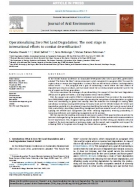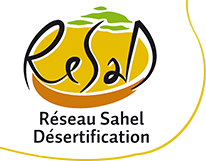Operationalizing Zero Net Land Degradation

Présentation du document
[Abstract from the authors: At the United Nations Conference on Sustainable Development (Rioþ20) in June 2012, governments adopted “The Future We Want” outcome document, which recognized (in paragraph 206) “the need for urgent action to reverse land degradation. In view of this we will strive to achieve a land-degradation neutral world ….”. This paragraph sets a goal of maintaining a world where the total amount of degraded land remains constant, and that would secure the currently available productive land for the use of present and future generations.
This article examines the challenges of operationalizing this concept of Zero Net Land Degradation (ZNLD) and its global derivative, a land degradation neutral world (LDNW).
First, the concept and need for ZNLD is introduced and explained. Then we look at the expectations from ZNLD/LDNW targets within the context of promoting the recognition of land degradation as a global threat and contributing to global food security. Next we elaborate the challenges in making ZNLD operational, including: scoping (determining the spatial scale and the selected domain for which land degradation neutrality is to be achieved); mapping (classifying the lands by their current use and state of their productivity); prescribing (prescribing management practices relevant to each of the land classes); applying the selected land management (for either reducing degradation, restoring productivity, or increasing resilience); and monitoring management and its outcome.
We then examine the enabling environment necessary to capture ZNLD opportunities and address the technical challenges facing the operationalization of ZNLD. The article concludes with recommendations for the way forward: first, recognize existing projects suitable for ZNLD testing and establish new pilot projects at the local community or landscape scales; and the second, seek recognition and support for achieving ZNLD at the global scale through the United Nations system.]
Table of content:
- Introduction : What is Zero Net Land Degradation and a Land Degradation Neutral World?
- What is the need for ZNLD/LDNW?
- Strengths and weaknesses of the UNCCD in addressing land degradation
- The emergence of the ZNLD and the Sede Boqer workshop
- Merits of the ZNLD/LDNW
- What are the expectations from ZNLD/LDNW targets?
- Promoting the recognition of land degradation as a global threat
- Contributing to global food security
- ZNLD Challenges
- Scoping e scale and domain
- Mapping degradation
- Prescribing relevant management practices
- Monitoring and assessment
- The enabling environment
- Financial resources
- Awarenes, motivation and empowerment
- Upscaling and joint bottom-up and top-down ZNLD implementation
- The way forward
- Pilot testing ZNLD at the local level
- Promoting ZNLD at the global level
- Conclusion
To quote this article: Chasek, P., et al., Operationalizing Zero Net Land Degradation: The next stage in international efforts to combat desertification?, Journal of Arid Environments (2014), http://dx.doi.org/10.1016/j.jaridenv.2014.05.020
